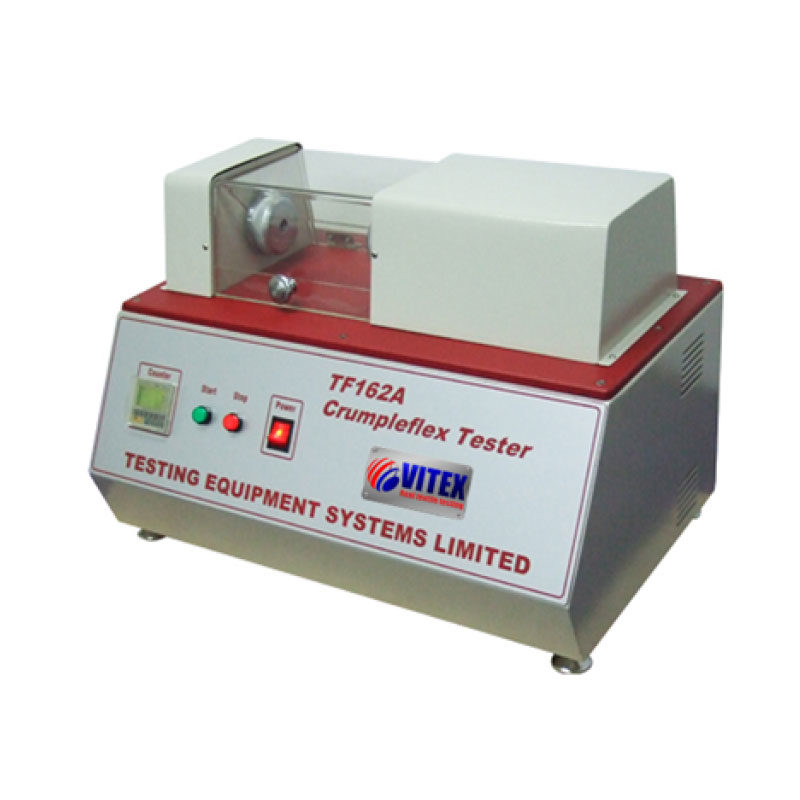Application
CrumpleFlex Tester, to determine the degradation of water resistance of coated fabrics due to crumpling and Flexing in use.
The equipment tests a tube of fabric by twisting it through 90o stretching alternately compressing the tube at the same time. After completion of the test, the fabric is tested for resistance to penetration by water. Crumple-Flex Tester is fitted with electronic pre-determined counter with automatic stop at a pre-determined number of cycles, and also fitted with acrylic plastic interlock safety cover.
Features
- Impact design of construction and appearance
- Acrylic safety cover ensures safety in operation
Model
- TF117C Crumpleflex Tester – Single Head (90kg)
- TF117C2 Crumpleflex Tester – Double Heads (110kg)
- TF117C4 Crumpleflex Tester – Four Heads (140kg)
Standards
ISO 7854, BS 3424.9, GB/T 12586, ISO 8096
Power
220 /110 V 50/60 Hz 3 A
Weight
90 Kg
Dimensions
570 x 380 x 380mm (L x W x H)



